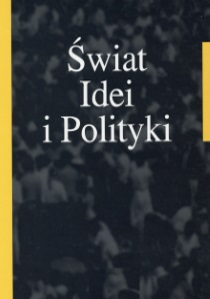Shanghai Cooperation Organization: A Realist Approach
DOI:
https://doi.org/10.34767/SIIP.2019.18.01Keywords:
Central Asia, Russia and China in CA, international and regional organizations in CA, SCO, EAEU, BRI, international and regional securityAbstract
The main goal of this paper is an analysis of activities, pur-poses, problems of the (SCO) since its inception in order to understand what is the main reason behind its creation and existence? What are its achievements and what benefits have got each member state? Is it beneficial to all members? The hypothesis is that SCO serves only its big members, it was intended to be a China’s tool to enter Central Asia without vexing Russia . The article analyzes the activities of the SCO with the existing theories in IR in order to answer these questions . The main objective of the SCO was an attempt by the powers of the Central Asia to control the region . The SCO faces problems of distrust between its members . It is a very important instrument of guaranteeing Sino-Central Asian partnership . It is also a guarantee that China will never dominate Central Asia due to many signed agreements within the organization .With more than twenty years of history and existence, the SCO may become a real force on the international arena . The SCO’s intention is to become a world power and to construct a fairer international order . The SCO has the economic potential and political will to do it.
References
Agreement on Regional Anti-Terrorist Structure between the Member States of the Shanghai Cooperation Organization. RATS SCO. Retrieved from: http://ecrats.org/en/.
Albert, E., The Shanghai Cooperation Organization. Council on Foreign Relations. Retrieved from https://www.cfr.org/backgrounder/shanghai-cooperationorganization#chapter-title-0–5.
Aris, S. (2013). Shanghai Cooperation Organization. Mapping multilateralism in transition. New York: International Peace Institute.
Beehner L. (2005). U.S. Military Bases in Central Asia, Council on Foreign Relations. Retrieved from: https://www.cfr.org/backgrounder/asia-us-military-basescentral-asia.
Blank, S. (2013). Making Sense of the Shanghai Cooperation Organization. Georgetown Journal of International Affairs, 14(2), pp. 39–49.
Brookes, P. (2006, June 12). Club For Dictators: An ugly agenda for Asia, The Heritage Foundation. Retrieved from: https://www.heritage.org/defense/commentary/club-dictators-ugly-agenda-asia.
Charter of the Shanghai Cooperation Organization. SCO Documents. Retrieved from: http://eng.sectsco.org/load/203013/.
Cooley, A. (2010), Russia and the Recent Evolution of the SCO: Issues and Challenges for U.S. Policy. In: T.J. Colton, T. Frye, R. Legvold (eds.), The Policy World Meets Academia: Declaration of Heads of Member States of SCO (2005) 5th July. China Daily. Retrieved from: http://www.chinadaily.com.cn/china/2006–06/12/content_6020345.htm.
Designing U.S. Policy toward Russia. Cambridge: American Academy of Arts and Sciences.
Hansen, F.S. (2008). The Shanghai Co-operation Organization: Probing the Myths. Copenhagen: Royal Danish Defense College.
Hoagland, R.E. (2016). Central Asia – Not In Our Backyard, Not A Hot Spot, Strategically Important, CIGI Online 87.
Imanaliev Muratbek interview in 2009 in Bishkek.
Keohane, R. (1984). After hegemony: Cooperation and discord in world political economy. Princeton: Princeton University Press, 1984.
Knyazev Alexandre interview in Bishkek 2010.
Konarovskiy Sergei deputy secretary general of the SCO Interview during internship in the secretariat of the SCO in 2011 in Beijing.
Lohschelder S. (2016), The Shanghai Cooperation Organization as a Multilateral Security Platform in Central Asia. Pronceton University. Retrieved from: https://jpia.princeton.edu/file/861/download?token=w22DwPE9.
Mariani, B. (2013). China’s role and interests in Central Asia. October. Saferworld.
Martin, L., Simmons B. (2002). International Organizations and Institutions. In:T. Carlsnaes, T. Risse, B.A. Simmons (eds.). Handbook of International Relations (192–2011). Thousand Oaks, CA: Sage Publications.
Mearsheimer, J. (1994–1995). False promise of International Institutions. International Security, Vol.19, No 3 (Winter), pp. 5–49.
Morgenthau, H. (1985). Politics among nations: The struggle for power and Peace, New York: Alfred Knopf.
Moldaliev Orozbek interview in 2009 in Bishkek.
Moldaliev Orozbek personal communication in 2011.
Nicharapova, J. (2014). Organisation de coopération de Shanghai: nouveau mode de coopération ou nouvelle intégration régionale?” PhD thesis of author defended in Sciences-Po Aix en Provence, France.
Nicharapova, J. (2015). L’Organisation de Coopération de Shanghai: Intérêts et jugements kirghizs. In: P. Chabal (ed.), Organisation de coopération de Shanghai et la construction de la nouvelle Asie. PIE Peter Lang, The Doi System. Retrieved from: https://doi.org/10.3726/978–3-0352–6570–5.
Nicharapova, J., Shukuralieva, N. (2019). Activities of international organisations on security issues in Central Asia. In: P. Chabal, J. Nicharapova, K. Baizakova (eds.), Cross-border exchanges. Eurasian perspectives on logistics and diplomacy (39–50). Frankfurt am Main: Peter Lang PIE. The Doi System. Retrieved from: https://doi.org/10.3726/b16331.
North, C., Thomas, R.P. (1970). An Economic theory of the Growth of the Western world. The Economic history review, 2nd series, Vol. 23, No. 1 (April), p. 5.
Pillalamarri, A. (2014, June 10). The United States Just Closed Its Last Base in Central Asia. The Diplomat. Retrieved from: https://thediplomat.com/2014/06/the-united-states-just-closed-its-last-base-in-central-asia/.
Rossiya otklonila predlozheniye Kitaya sozdat’ obshchiy rynok v granitsakh stran SHOS (2004, September 24). Lenta.ru. Retrieved from: https://lenta.ru/news/2004/09/24/market.
Russia, China: Competing Visions of the SCO (2008, August 28). Stratfor. https://worldview.stratfor.com/article/russia-china-competing-visions-sco.
Shukuralieva, N. (2018). Azja Centralna: uwarunkowania integracji regionalnej. W: T. Wallas, R. Fiedler (red.), Relacje Unii Europejskiej z Azją Centralną. Uwarunkowania, wyzwania, efekty (207–223). Poznań: FNCE.
Why is the Shanghai Cooperation Organization (SCO) important? Quora. Retrieved from: https://www.quora.com/Why-is-the-Shanghai-Cooperation-OrganizationSCO-important.
Programma mnogostoronnego torgovo-ekonomicheskogo sotrudnichestva gosudarstv-chlenov Shankhayskoy Organizatsii Sotrudnichestva sentyabr’ 2003 goda.
Mekhanizmy realizatsii Programmy o torgovo-ekonomicheskom sotrudnichestve SHOS.
Polozheniye o Sekretariate Shankhayskoy organizatsii sotrudnichestva (2003, March 29). cndt.ru. Retrieved from: http://docs.cntd.ru/document/901880661.

